Added mid 2022:
A lightly edited version of a comment by @LittleWhole
In 2022 the world is moving towards the far more robust and convenient USB-C connector. While there are still issues with USB-C (including even mechanical incompatibilities), things are slowly being addressed (i.e. USB4 standard on the protocol side) and I have only ever encountered one USB-C cable that wouldn't plug into a USB-C receptacle in my life. Adoption of USB-C is definitely picking up the pace - not just in consumer electronics, but a motor controller for my school's robotics club has even adopted USB-C
_____________________
A major flaw:
A major factor in abandoning mini-USB is that it was fatally flawed mechanically. Most people who have used a mini-USB device which requires many insertions will have experienced poor reliability after a significant but not vast number of uses.
The original mini-USB had an extremely poor insertion lifetime - about 1000 insertions total claimed. That's about once a day for 3 years. Or 3 times a day for one year. Or ... For some people that order of reliability may be acceptable and the problems may go unnoticed. For others it becomes a major issue. A photographer using a flash card reader may expend that lifetime in well under a year.
The original mini-USB connector had sides which sloped as at present but they were reasonably straight. (Much the same as the sides on a micro-A connector). These are now so rare that I couldn't find an image using a web search. This image is diagrammatic only but shows the basic shape with sloped but straight sides.

Efforts were made to address the low lifetime issues while maintaining backwards compatibility and the current "kinked sides" design was produced. Both plug and socket were changed but the sockets ("receptacle") will still accept the old straight sided plugs. This is the shape that we are all so used to that the old shape is largely forgotten.


Unfortunately, this alteration "only sort of worked". Insertion lifetime was increased to about 5,000 cycles. This sounds high enough in theory but in practice the design was still walking wounded with respect to mechanical reliability. 5,000 cycles is a very poor rating in the connector industry. While most users will not achieve that many insertion cycles, the actual reliability in heavy use is poor.
The micro-USB connector was designed with these past failings in mind and has a rated lifetime of about 10,000 insertion cycles. This despite its apparent frailty and what may appear to be a less robust design. [This still seems woefully low to me. Time will tell].
Latching Unlike mini USB, Micro USB has a passive latching mechanism which increases retention force but which allows removal without active user action (apart from pulling). [Latching seems liable to reduce the plug "working" in the receptacle and may increase reliability].
Size matters:
The micro and mini USB connectors are of similar width. But the micro connector is much thinner (smaller vertical dimension). Some product designs were not able to accommodate the height of the mini receptacle and the new thinner receptacle will encourage and allow thinner products. A mini-USB socket would have been too tall for thin design. By way of example - a number of Motorola's "Razr" cellphones used micro-USB receptacles, thus allowing the designs to be thinner than would have been possible with a Mini-USB receptacle.
- Specific Razr models which use MICRO-USB include RAZR2 V8, RAZR2 V9, RAZR2 V9m,
RAZR2 V9x, DROID RAZR, RAZR MAXX & RAZR VE20.
Wikipedia on USB - see "durability".
Connector manufacturer Molex's micro USB page
They say:
- Micro-USB technology was developed by the USB Implementers Forum, Inc. (USB-IF), an independent nonprofit group that advances USB technology. Molex's Micro-USB connectors offer advantages of smaller size and increased durability compared with the Mini-USB. Micro-USB connectors allow manufacturers to push the limits of thinner and lighter mobile devices with sleeker designs and greater portability.
Micro-USB replaces a majority of Mini-USB plugs and receptacles currently in use. The specification of the Micro-USB supports the current USB On-The-Go (OTG) supplement and provides total mobile interconnectivity by enabling portable devices to communicate directly with each other without the need for a host computer.
... Other key features of the product include high durability of over 10,000 insertion cycles, and a passive latching mechanism that provides higher extraction forces without sacrificing the USB's ease-of-use when synchronizing and charging portable devices.
All change:
Once all can change, all tend to. A significant driver to a common USB connector is the new USB charging standard which is being adopted by all cellphone makers. (Or all who wish to survive). The standard relates primarily to the electrical standards required to allow universal charging and chargers but a common mechanical connection system using the various micro-USB components is part of the standard. Whereas in the past it only really mattered that your 'whizzygig' could plug into its supplied power supply, it is now required that any whizzygig's power supply will fit any other device. A common plug and socket system is a necessary minimum for this to happen. While adapters can be used this is an undesirable approach. As USB charging becomes widely accepted not only for cellphones but for xxxpods, xxxpads, pda's and stuff in general, the drive for a common connector accelerates. The exception may be manufacturers whose names begin with A who consider themselves large enough and safe enough to actively pursue interconnect incompatibility in their products.
Once a new standard is widely adopted and attains 'critical mass" the economics of scale tend to drive the market very rapidly to the new standard. It becomes increasingly less cost effective to manufacture and stock and handle parts which have a diminishing market share and which are incompatible with new facilities.
I may add some more references to this if it appears there is interest - or ask Mr Gargoyle.
Large list of cellphones that use micro-USB receptacle
_______________________________
_______________________________
A few more images allowing comparisons of a range of aspects including thickness, area of panel, overall volume (all being important independently of the others to some for various reasons) and retention means.
Large Google image samples each linked to a web page
and more
Useful discussion & brief history Note: they say (and, as Bailey S also notes)
- Why Micro types offer better durability?
Accomplished by moving leaf-spring from the PCB receptacle to plug, the most-stressed part is now on the cable side of the connection.
Inexpensive cable bears most wear instead of the µUSB device.
Maybe useful:
USB CONNECTOR GUIDE — GUIDE TO USB CABLES
USB connections compared
What is Micro USB vs Mini USB


